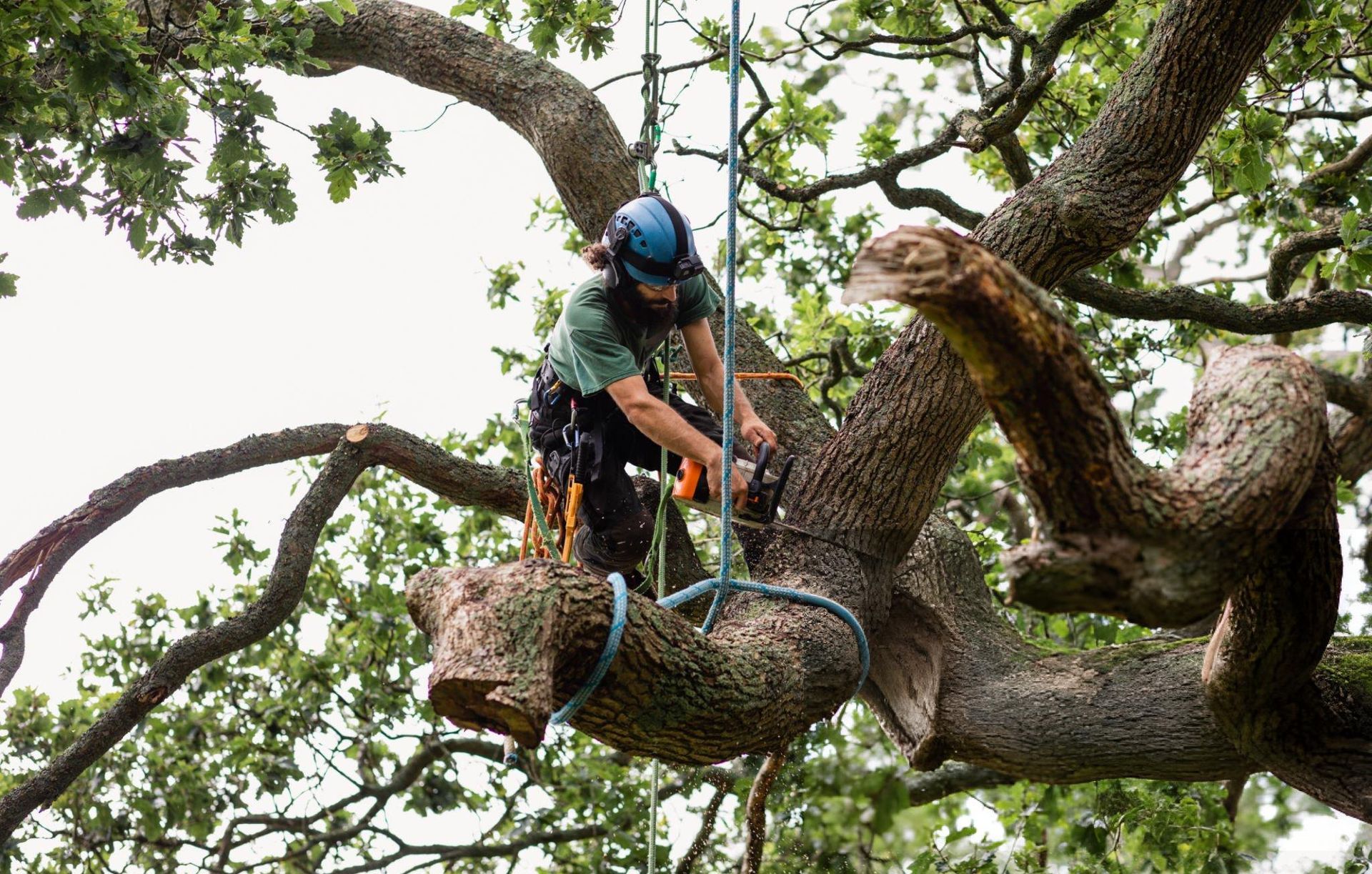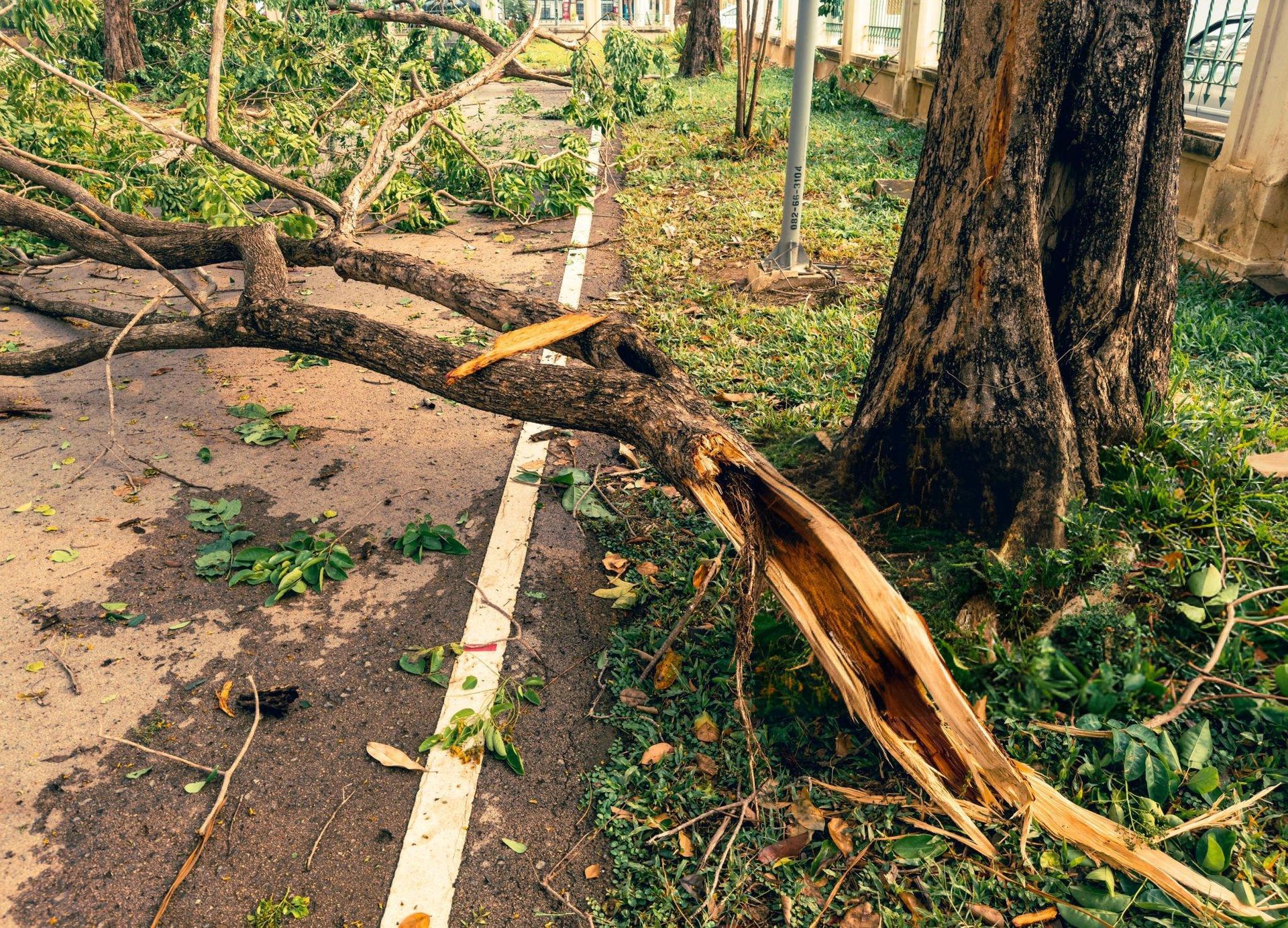Power Line Clearance Rules Every San Antonio Homeowner Should Know
Fall in San Antonio brings cooler mornings and the occasional gusty storm. It's the time of year when many of us start trimming back trees and cleaning up our yards before things really get breezy. While that's all part of good yard care, there's one area that tends to get missed, trees growing too close to power lines.
Power line clearance in San Antonio isn't just about looks. It plays a big role in avoiding power outages and staying safe during storm season. When heavy branches lean into wires or start rubbing against them, it can lead to problems nobody wants to wake up to. And in the fall, when storms can pop up suddenly, it becomes even more important to pay attention to what's growing too close.
We put this guide together to help you understand the basics, spot trouble before it starts, and know when it's time to bring in a professional.
Understanding What Power Line Clearance Means
Power line clearance simply means keeping trees and branches far enough away from utility wires to avoid contact. That space, or "clearance," is not just a suggestion. It's a safety buffer that keeps things running without interruption.
Around most homes, there are two main types of power lines to look for:
- Service drops: These are the thinner lines that connect from a neighborhood pole to your house.
- High-voltage lines: These are thicker and usually run through neighborhoods on taller poles.
Service drops are still dangerous, but they're part of what's managed on your property. High-voltage lines, on the other hand, belong to the broader power grid. When trees start creeping into those lines, the risk goes up in a big way. All it takes is a branch moving in high wind or storm debris caught in a tree to knock out power or cause a fire.
One thing that surprises many people is how fast trees can grow into those problem spots. San Antonio's fast-growing hardwoods like pecan and cedar elm can reach into wire space in just a season or two, especially during rainy stretches. Fall winds make things worse when dry limbs start breaking and getting blown around.
Who's Responsible for Keeping Trees Away from Power Lines
It's easy to assume the city or electric company has things covered when it comes to overhead wires. And that's partly true, but it depends on where the trees are and which section of the lines they hit.
In San Antonio, homeowners are usually responsible for whatever happens on their property, including trees near the service line that connects to the house. If a tree on your lot is growing into or over that line, it's up to you to keep it trimmed back safely.
For larger utility lines in easements or alleyways, the local power company may step in if something becomes unsafe. But that doesn't mean it's hands-off for homeowners. If a tree on private land grows into a utility zone, they might still ask for it to be cleared, and quickly. Ignoring it can lead to bigger issues, especially during storm season when repairs take time and create more chaos for everyone tied to that line.
Calling in a licensed tree specialist is usually the safest move. Work near wires isn't just risky, it comes with rules that most folks don't know unless they've been trained for it. Teague's Tree Service has been providing professional power line clearance in San Antonio since 1996, with licensed and insured technicians who understand proper safety protocols.
What to Watch for in Your Own Backyard
Knowing what to look for on your property can help you stay a step ahead. Some signs are easy to miss until it's too late, so it's worth checking trees near your home at least once each season.
Here are a few red flags to spot:
- Branches that touch or hang just above power lines
- Limbs that sway close to the wires when the wind picks up
- Tree trunks leaning toward utility poles or wires
- Signs of dry rot or splitting in older branches near the lines
In San Antonio yards, it's common to find large live oaks or pecans that have been there for decades. These trees grow in wide, reaching patterns. Over time, they can stretch right into that clearance space without much warning. And during a fall storm, when the ground softens and winds shift, older limbs may snap in ways that take down wires or start fires.
Fall brings that tricky mix of dry heat followed by sudden rain. That can weigh down trees that were already strained, putting overhead wires at even greater risk.
Local Safety Rules and Best Practices
San Antonio follows several safety recommendations for tree growth near power lines. There's no single rule that applies to every yard, since the height of the tree and the type of wire both matter. Still, there are good habits to follow for fall maintenance.
Some helpful basics include:
- Keeping tree limbs at least 10 feet away from the nearest wire when possible
- Trimming trees in late fall or winter to catch regrowth early and avoid stressing the plant
- Avoiding heavy cuts during dry, hot periods, since trees may not heal as well
Regular tree care before fall gets windy is often the best way to avoid emergency work later. Think of it like mowing the lawn or checking sprinklers at the end of summer. It's just one more thing that keeps everything running safely as the seasons shift.
If you're not sure which limbs are too close or what type of line they're near, it's best to let someone with training look things over. Electricity and ladders don't make for a safe mix, especially when trees are involved.
Staying Safe and Ready for Fall Weather
Fall in San Antonio can surprise you. One day you're grilling in the backyard, and the next, there's a storm and power flickers. Taking time now to check the trees around your property can make a big difference later in the season.
A good place to start is just walking around your yard and looking up. If you see anything that's close to a power line or looks heavy and out of balance, it's worth taking seriously. Damage often happens when branches drop after a big wind, not before.
By keeping an eye on your trees and understanding how they interact with the power lines overhead, you're protecting your home from more than just the weather. Acting early gives you more control, fewer surprises, and a better chance of getting through the season with peace of mind.
When branches hang too close to wires or trees lean toward poles, it's time to check on your yard's safety. Knowing proper clearance requirements and growth patterns makes a big difference in fall weather preparation. For help managing
power line clearance in San Antonio, work with professionals who can identify risks before storm season begins. At Teague's Tree Service, we offer 24-hour emergency services for situations when storms have already caused dangerous tree-power line interactions. Contact us to schedule a checkup or ask questions about any trees causing concern.



